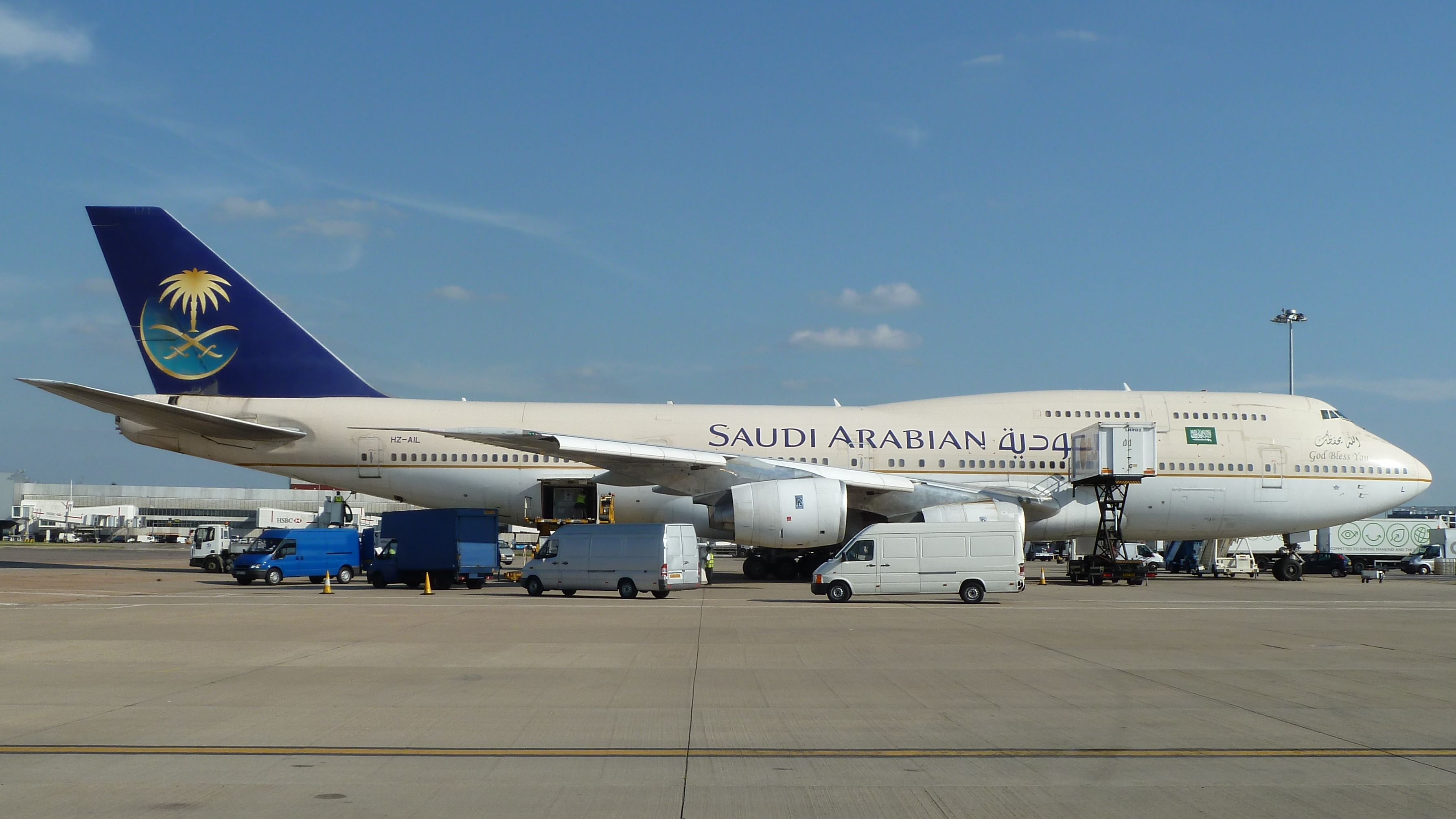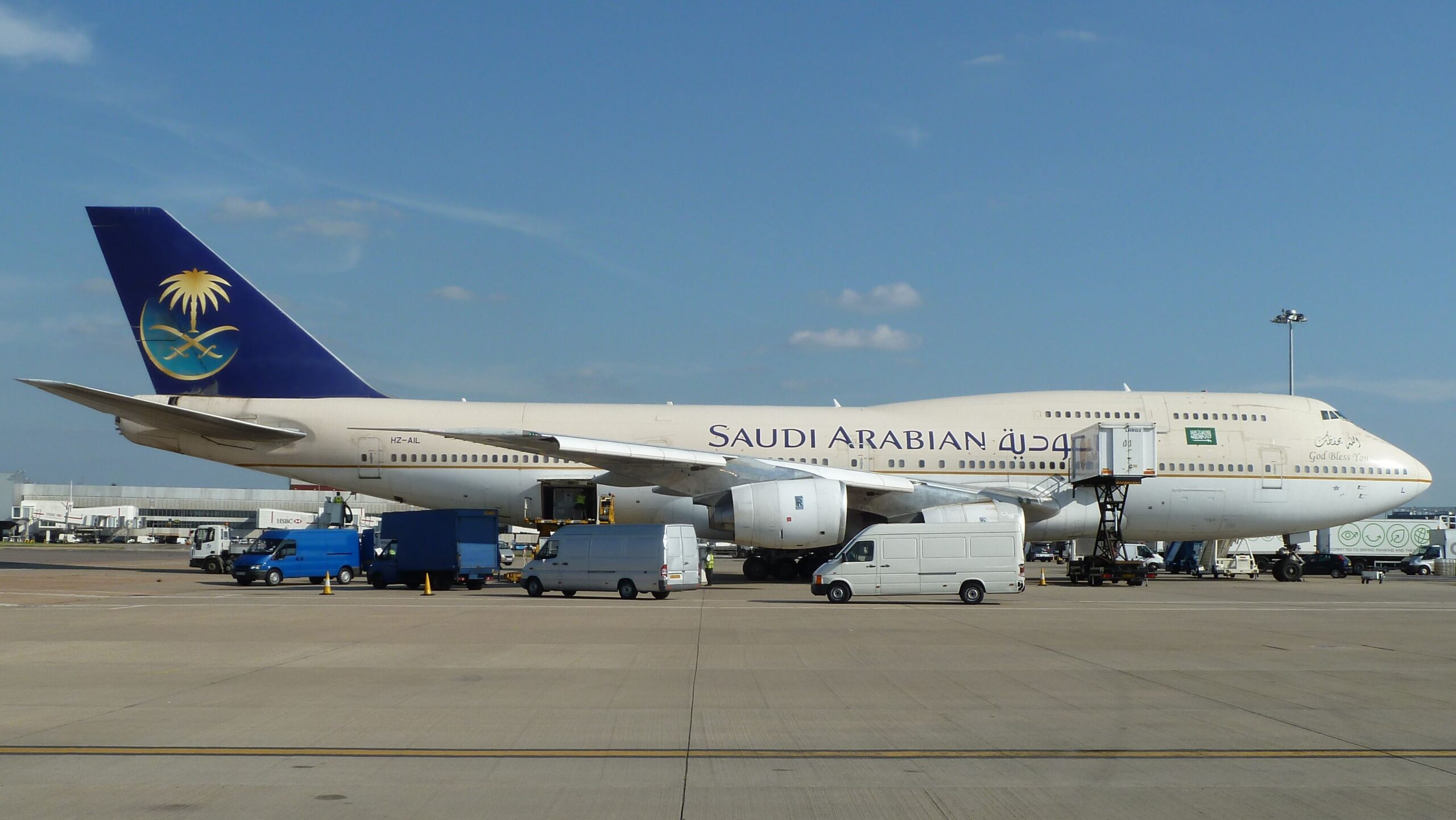
Several issues can lead to an aircraft being written off. Crashes that destroy the airframe are the most obvious answer, but minor, low-speed incidents on the ground can also end a plane’s career. This was the case for a Saudia Boeing 747-300, which taxied into a ditch in Kuala Lumpur in 2001.
Coming out of maintenance
Maintaining aircraft is integral to ensuring they have the fullest service lives possible. This is sometimes done as a routine or precautionary measure, while, in other instances, it directly corresponds to a particular issue. This was the case for the Saudia Boeing 747 in question, registration HZ AIO, back in August 2001.
According to the Bureau of Aircraft Accidents Archives, the quadjet had been transferred to a hangar in Kuala Lumpur to address technical problems with the engines. After completing the necessary work in the Malaysian capital, it was ready to return to Saudia’s base at Jeddah’s King Abdulaziz International Airport.
The plan was for it to do so while operating a regularly scheduled service from Kuala Lumpur to Jeddah. On the day in question (August 23rd, 2001), the flight was set to have 319 passengers onboard. However, an incident while the repaired aircraft was taxiing from the hangar to the gate complicated this matter.
Damaged beyond repair
Six engineers were onboard the aircraft as it taxiied from the hangar to the gate. The aircraft’s journey back to the passenger-centric part of Kuala Lumpur International Airport involved multiple taxiways, with some interchanges between these requiring a turn. It was at one such turn that things went terribly wrong.
Unfortunately, a loss of control caused the aircraft to miss the turn and taxi straight into a drainage ditch. The aircraft’s nose impacted the ground on the other side of the ditch, causing it to break off. All six of the stricken 747-300’s occupants received injuries due to the incident.
According to The Aviation Safety Network, the aircraft – powered by its number 2 and 3 engines at the time of the incident – had the necessary hydraulic pump switches turned off. This meant that the brakes could not function properly, compounded by the fact that a locking pin had been left in the nose gear. Due to these two factors, it couldn’t make the turn and thus entered the ditch.
End of the line for the aircraft involved
The damage suffered by the 747-300 involved in the incident proved terminal for the aircraft. According to data from ATDB.aero, an announcement in October 2001 initially showed plans to repair the aircraft. However, the damage was too extensive, and it was written off in February 2002.
Data from ch-aviation shows that HZ-AIO spent its entire operational career with Saudia, joining the airline in October 1985. Including a few hours of pre-delivery test flights, it racked up a total of 49,688 hours across 13,781 cycles in this time. This gave it an average cycle length of three hours and 37 minutes.
In an incident several years later, an Etihad Airways Airbus A340 was also written off following extensive nose damage. However, in this case, the plane would suffer this fate before being delivered to the airline. After engineers failed to apply chocks while performing stationary tests, the A340 slammed into a wall, splitting off its cockpit and damaging the left engines.
The 747-300 today
The 747-300 made its maiden flight over 40 years ago and would ultimately sell just 81 units, well below the 389 sales for the 747-200 and the 694 examples of Boeing’s 747-400 produced. With over 60 operators at the turn of the millennia, 747-300 numbers had dropped to just a handful by the mid-2010s.
Ch-aviation data suggests that just one 747-300 is active today. The plane (registration: HZ-HM1A) is approaching 40 years old and operates VIP and government flights under Saudi Arabian Royal Flight.
That said, 747-family aircraft are becoming rarer to see in the skies today. There are still a few notable operators of the 747-400, including Lufthansa and Asiana Airlines, but its numbers are dwindling.
What do you make of this incident involving a Saudia Boeing 747-300? Do you know of any other similar occurrences across the industry? Let us know your thoughts and experiences in the comment section.

